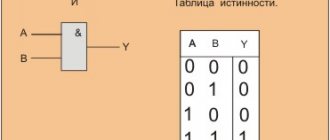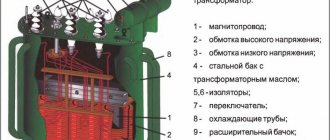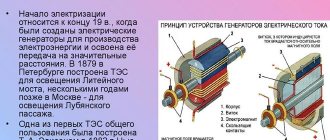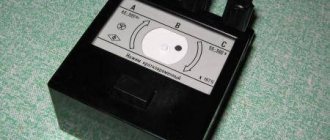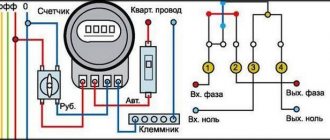Features and purpose
Sensor-detectors are fire-fighting technical means that transmit notification of a fire to a control panel. Typically, round white boxes that are mounted on the ceiling are equipped with several sensors. Detectors are installed on various objects and are used taking into account the environment in which they will be located. Modern fire alarm detectors are installed in houses, apartments, public places, offices and enterprises.
The fire protection system can notify the fire department in time of a minor fire. If the alarm system is additionally connected to the fire extinguishing system, the fire will be extinguished in a matter of seconds after the sensor detects a potential threat.
Fire detectors are designed to perform a number of functions:
- Detection of fire at its first manifestations and activation of sound notification. Rapid detection is achieved due to changes in temperature, changes in the density of the environment, open fire, and uncharacteristic substances in the air (soot, gas, aerosol).
- The contaminated environment must not impede or block the operation of the detectors. Dust, impurities, and high air humidity do not interfere with the proper operation of the sensors.
- Mechanical influences should not interfere with the operation of detectors.
The devices have different technical features, but must comply with uniform installation standards. When designing, you should rely on the controlled object and the fire load.
The choice in 90% of cases consists of three types of detectors: smoke, heat and flame.
Security complex: stun the criminal
Such an installation detects the entry of third parties into an object, generates and transmits various notifications, and controls sound and light detectors.
An alarm system informs about a robbery attack. The alarm signal is sent by pressing a button or pedal, or can be transmitted automatically when glass breaks .
The operating algorithm of this system is also simple. Suppose there is movement in the “secured” building. It is detected by a certain sensor and sends a signal to the control panel. The siren will immediately sound. And again - a call to the telephone numbers of the owners of the premises, with a notification that the notification device has worked. The alarm can also be displayed on the security console, transmitted over a radio channel, or via the Internet.
Any security alarm can be modified to enhance its stunning effect on the criminal.
When an alarm is triggered, you can, for example, turn on the lights in all rooms of the protected facility. Accompanied by a siren, such illumination will attract the attention of neighbors and all people passing by. You can do the complete opposite - turn off any devices.
Principle of operation
Fire system detectors work according to the same formula. When smoke, gas or flame appears in the room, the sensors react by sending a signal to the receiver. When the signal is processed and a threat is identified, the detector receives a command to launch an audible siren, and information about a fire in a certain sector is sent via the network to the dispatcher’s control panel.
Units that only detect fire are considered low-quality detectors. High-quality devices include those equipped with several units that respond to various precursors of fire (smoke, gas, heat). The sensor reads the quality of air flows, increasing safety in case of fire.
A standalone device works a little differently. Due to their short range, such devices are designed to provide security in apartments, small warehouses, garages, etc.
Modern fire-fighting units have an attractive design and color scheme. Therefore, detectors will complement the interior of your home.
Installation of detectors does not cause problems. To secure the box with sensors to the ceiling, just install a hook in this place. Periodically, the detector needs to be cleaned of dust and the batteries changed.
Safety requirements
General technical requirements are specified in fire safety standards NPB 66-97. The document applies to autonomous fire detectors installed in various types of structures for automatic fire detection. The devices can operate autonomously or as part of an autonomous fire alarm system.
It is worth mentioning that the standards do not apply to detectors with sampling or special purposes.
Advantages and disadvantages
There are several types of detectors that can detect the presence of heat, smoke or flame. Each type has its own pros and cons.
Smoke ionization devices are the most often criticized. This happens because these devices show good performance only with smoke consisting of fine suspensions. The emission of charged substances causes radioactive radiation, therefore the installation of such detectors is prohibited in places where people permanently live.
Optical smoke sensors will not detect the combustion of gas, nor will they react to the action of solvents or organic liquids, because these substances do not produce smoke.
Flame sensors will be able to recognize a threat in the ultraviolet or infrared range. Essentially, the flame sensor only works great when there is an active fire. If the fire starts with smoldering, the effectiveness of such a sensor is reduced to nothing.
Since there are no sensors with ideal characteristics, it is recommended to use complex devices. A variety of detectors in fire systems will be able to respond to stimuli, increasing safety by quickly and accurately responding to a fire.
What the law says
The main law that regulates the presence of fire alarms is document number 123. But there is no mention of apartments in it. This means that the fire alarm in the apartment is the decision of its owners. That is, the owners themselves decide whether to install an alarm or not.
Attention! Cases of fraudulent installation of fire alarms in apartment buildings have become more frequent. Be careful, there are no laws that would force such an installation.
But today statistics say that the majority of fires occur in the residential sector. Therefore, in new buildings, fire alarms are included in the designs. And responsibility for maintaining the system in working order rests with the management company. And if for some reason the alarm did not go off during a fire, then the management of the management company bears criminal liability. Especially if people were injured in the fire. Here the term is quite long - 7 years in prison.
Owners of apartments in new buildings try to get rid of fire detectors, because the devices often do not fit into the interior. No one will forbid you to do this. But it’s worth thinking about the fire safety of your own home. It’s not for nothing that fire detectors were installed in the apartment. It is better to choose those that fit into the design of the rooms, since they are presented in a huge assortment on the market.
Types of fire alarm sensors
Let's consider all the sensors that are used in fire detection.
Thermal sensors
They work like a thermostat, that is, they measure and react to changes in temperature in the room. They can be installed anywhere in the house where other detectors are not available. Linear thermal detectors are recommended for use in dusty, gassy, aggressive environments or at low temperatures.
Since such detectors can be used in aggressive environments, they have found popularity in industrial fire safety.
And standard thermal sensors are disposable and reusable. The former are allowed for use in small spaces. When triggered, the sensitive element of the sensor exhausts its resource and the detector must be replaced. Reusable, as the name implies, does not change after each operation.
If we classify a heat detector according to the type of reading parameter, we distinguish:
- Threshold;
- Differential;
- Combined.
The first (threshold or maximum) is triggered when the permissible temperature level in the house is exceeded. The very first models of heat detectors were produced using this principle. They are not positioned as quick response sensors, because the fire signal was given when the fire had already flared up enough and heat appeared.
Differential analyzes the rate of temperature increase in the environment where it is placed. If the heating of the environment deviates from the norm, the detector gives a signal about the start of a fire.
Combined is a mixture of the first and second types. Taking the best qualities, it works if it notices the air heating too quickly and if the temperature has reached a threshold value. It is universal, more reliable and in demand in fire alarm systems.
Thermal sensors have a peculiarity - they do not react to the combustion of materials that do not emit heat. If you place such a detector on a high ceiling, due to the large distance, you may find out about the fire much later or not find out at all.
Smoke detectors
Smoke detectors or smoke extractors are more effective due to their design features. They don't need to react to heat or measure it. The reaction to smoke can help prevent a fire while it is still smoldering.
There are differences in the operation of smoke extractors, so according to their structure they can be divided into two types:
- Optical analyzers are common analyzers, the operating principle of which is based on the operation of a light emitter together with a photodetector. Optical ones are divided into point and linear. Spot smoke detectors send signals into the environment that dissipate if there is no smoke in the atmosphere. If the rays are reflected and hit the photodetector, then they were reflected from the smoke, and the alarm will turn on.
- Linear fire smoke detectors operate as a receiver-transmitter. A beam of light is sent to the sensitive element using an LED. If the goal is achieved, then the air is clean and there are no obstacles. If the light beam does not reach its target, the sensor gives an alarm.
It is recommended to install smoke detectors on the ceiling, closer to the hood, to ensure a quick effect and extinguish the beginning of a fire before it develops into a real fire.
Features of point sensors are that they are not susceptible to black smoke. They require keeping the room clean and regular cleaning. False alarms can be caused by steam and insects.
Fire smoke detectors are often used by electronics enthusiasts and are assembled using an Arduino controller.
Flame sensors
Light or “flame” detectors detect open flames in a room or fires using the light range, namely: infrared, ultraviolet, electromagnetic.
The equipment is quite expensive, and in general it is suitable for covering large industrial areas. Suitable for facilities where temperature increases and changes are commonplace, where smoke and gas contamination may also be acceptable. Therefore, fire in such places is detected using light detectors or flame sensors.
The downside is the reaction to sparks from welding. The solution is to install an additional filter on the sensitive element of the sensor.
Gas sensors
The devices react to the content of carbon monoxide and other types of gas in the room. Detectors are in demand at facilities with gas equipment, water heaters, boilers, etc. If ventilation is poor, the gas concentration in the room can be quite high, and the sensor will inform you about this.
Combined detectors
These detectors are the most accurate, as they include the above parameters. They can be configured more flexibly, for example, by installing a detector in the kitchen and turning off smoke detection.
Hand sensors
The simplest detector that will work if a person activates it. Typically, this is a button that can be linked to a siren (most often) and notify the fire alarm system of an incident. The button is located in a special housing, which is attached to the wall.
Additional classification
Fire alarm sensors can be classified according to other equally important parameters. Often, it is the additional classification that helps to make a choice in favor of the detector needed for a specific task.
By type of transmitted signal
Devices may have single-mode, dual-mode, or multi-mode options:
- Single-mode requires the influence of only one factor. For example, the temperature has risen and it becomes active. This is not very good, because the device may fail and this will only be known during a physical check of the device.
- Dual mode requires one more parameter. For example, in addition to the “Fire” signal, it reports with a certain frequency that “There is no fire.” If the second message does not arrive at the control panel for a long time, we can conclude that the sensor is broken.
- Multi-mode provides fault information. For example, cable break, damage to the communication module or sensitive element, etc.
By localization
Devices according to this parameter are divided into:
- Point – a single sensor for a specific purpose.
- Multipoint - the device is equipped with several different types of sensors.
- Linear – monitoring the territory along an established line. Can be paired or single.
By type of parameter change tracking
Gas sensors are popular in this area. They are capable of detecting carbon monoxide and other types of gas in the atmosphere. The device is not used in production, but has gained its audience in residential buildings.
Combined detectors, due to the presence of several types of sensors in the housing, are a more universal device that can monitor several parameters at once. The most commonly used combination is a heat + smoke sensor.
Optical-electronic smoke detectors use relays in their design. Upon contact with smoke, the light beam is reflected onto the photocell, the relay closes the contact and a signal is sent.
Sensor selection
The selection process depends entirely on the location and purpose of the detector:
- Thermal - simple, cheap and unpretentious to the “habitat”. But the response threshold is low. Short-lived.
- Optical smoke is complex, expensive and difficult to clean both the device itself and the air. The response threshold is high. Short-lived.
- Ionization smoke is more expensive, sensitive to location, and difficult to use. The response threshold is high. Long lasting.
- Combined is an excellent option that includes optical and thermal sensors. Expensive, complex and optimal.
Companies that sell detectors for homes:
- Ajax;
- Xiaomi;
- Bolide.
Each of the detectors can be addressable or non-addressable.
The difference between addressable and non-addressable sensors
Before purchasing, find out about the capabilities of the detectors. If it is targeted, it can be used to accurately determine the source of the fire and extinguish it before a large fire occurs. Non-addressed only reports the fact of a change in a parameter (for example, an increase in temperature).
Non-addressed is more suitable for a room with small square footage. Addressable is recommended for use on larger objects.
Designation
It looks like a certain set of letters/numbers:
IP x1x2x3, where x1 is a sign of the fire that it controls: 1 - heat, 2 - smoke, 3 - flame, 5 - manual.
The next position – x2x3, tells the principle of operation of the sensor. For example, IP 104 stands for a thermal detector using a fusible sensor, IP 212 is an optical smoke detector.
Graphically, the fire detector sign should be depicted in accordance with RD 25.953-90 , which provides examples of the correct application of all elements of alarm systems, fire extinguishing, and video surveillance.
For more information about other types of fire detectors , their design and operating principle, see the section “Fire Detectors”
Sensor Installation
All fire alarm detectors are ceiling mounted. Installation on the wall is possible only in large industrial premises (workshop, barn, etc.). In the case of a wall-mounted device, they must be installed at a distance of at least 30 cm from the ceiling.
According to the scheme, it is allowed to combine no more than 5 devices. It is allowed to combine up to 10 linear detectors, if this can be technically implemented. Installation above high racks and cabinets is a prerequisite for installation.
Each sensor has standards for the size of the area that it is capable of covering. Following the rules will help protect the equipment from fire. To cover a large area you need:
- Prepare a project.
- Calculation of the number of devices.
- Identify placement points.
Installation should be done according to the instructions included with the purchased equipment:
- Secure the detectors at the installation sites.
- Connect the receiver cables to each device.
- Use a two-core cable to supply power.
- In the sensor datasheet, pay attention to the typical and maximum voltage. These are the limits.
- You need to check the device with LED non-polar indicators.
- The contacts of the thermal sensors in the closed position are connected to the loop.
- In standby mode, the devices do not consume current.
How to choose
Here you need to build on your financial capabilities and security requirements. There are addressable and addressless devices. The former help to accurately determine the location of the fire, and therefore it is easier to eliminate the problem. Unaddressed simply notify about changes in the external environment. The most unpretentious in maintenance and reliable in operation are thermal sensors. They are affordable and easy to install. Ionization sensors are more expensive, but guarantee a higher level of safety.
Using the Sensor
According to the established regulations, it is mandatory to check the entire fire alarm system, including detectors:
- Visual inspection - every month from the moment of installation until the moment of dismantling.
- Monitoring of light indication - every month.
- Cleaning, pulling, purging - every month (with smoke and combined sensors).
- Monitoring the correct transmission of data by detector signals – once every six months.
You need to clean the device from dust and dirt in this order:
- Use your fingers to press the housing latches and pull them towards you.
- Remove the smoke eliminator.
- Use a brush to clean the camera of debris.
- Collect and return to base.
After cleaning, always check the functionality of the detector.

